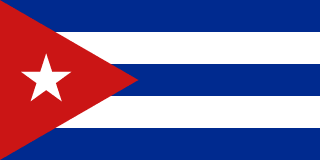Cuba - Economy

How is the economy of Cuba? Based on the information we have, Cuba has a still largely state-run planned economy, although privatization increasing under new constitution; widespread protests due to lack of basic necessities and electricity; massive foreign investment increases recently; known tobacco exporter; unique oil-for-doctors relationship with Venezuela; widespread corruption. Key agricultural products in this country include: sugarcane, cassava, plantains, vegetables, mangoes/guavas, milk, tomatoes, pumpkins/squash, sweet potatoes, bananas (2023).
More about the economy of Cuba
| Labor force | 4.859 million (2024 est.) |
|---|---|
| Industrial production growth rate | -0.9% (2023 est.) |
| Industries | petroleum, nickel, cobalt, pharmaceuticals, tobacco, construction, steel, cement, agricultural machinery, sugar |
| Population below poverty line | |
| Taxes and other revenues | |
| Fiscal year | |
| Exchange rates | |
| Currency | Cuban pesos (CUP) per US dollar - |
| Exchange rates 2024 | 24 (2024 est.) |
| Exchange rates 2023 | 24 (2023 est.) |
| Exchange rates 2022 | 24 (2022 est.) |
| Exchange rates 2021 | 24 (2021 est.) |
| Exchange rates 2020 | 1 (2020 est.) |
| Public debt | |
| Public debt 2016 | 42.7% of GDP (2016 est.) |
| Budget | |
| Revenues | $54.52 billion (2017 est.) |
| Expenditures | $64.64 billion (2017 est.) |
| Budget surplus (+) or deficit (-) | |
| Imports | |
| Imports 2020 | $8.067 billion (2020 est.) |
| Imports 2019 | $10.971 billion (2019 est.) |
| Imports 2018 | $12.567 billion (2018 est.) |
| Imports (partners) | Spain 24%, China 13%, Netherlands 10%, USA 9%, Canada 6% (2023) |
| Comodities Imports force | beer, poultry, rice, plastic products, soybean oil (2023) |
| Exports | |
| Imports 2020 | $8.067 billion (2020 est.) |
| Imports 2019 | $10.971 billion (2019 est.) |
| Imports 2018 | $12.567 billion (2018 est.) |
| Exports (partners) | China 34%, Spain 12%, Germany 6%, Switzerland 5%, Hong Kong 4% (2023) |
| Comodities Exports force | tobacco, nickel, liquor, zinc ore, precious metal ore (2023) |
| Real GDP (purchasing power parity) | |
| Real GDP (purchasing power parity) 2024 | $81.165 billion (2024 est.) |
| Real GDP (purchasing power parity) 2023 | $81.985 billion (2023 est.) |
| Real GDP (purchasing power parity) 2022 | $83.597 billion (2022 est.) |
| GDP (official exchange rate) | $259.781 billion (2024 est.) |
| Real GDP Per capita | |
| Real GDP per capita 2024 | $23,700 (2024 est.) |
| Real GDP per capita 2023 | $18,300 (2023 est.) |
| Real GDP per capita 2022 | $13,300 (2022 est.) |
| GDP - composition, by sector of origin | |
| Agriculture | 1.3% (2023 est.) |
| Industry | 27.5% (2023 est.) |
| Services | 70% (2023 est.) |
| GDP - composition, by end use | |
| Household consumption | 73.3% (2023 est.) |
| Government consumption | 25.5% (2023 est.) |
| Investment in fixed capital | 12.3% (2023 est.) |
| Investment in inventories | 10% (2023 est.) |
| Exports of goods and services | 43.5% (2023 est.) |
| Imports of goods and services | -64.6% (2023 est.) |
| Unemployment rate | |
| Unemployment rate 2024 | 1.6% (2024 est.) |
| Unemployment rate 2023 | 1.8% (2023 est.) |
| Unemployment rate 2022 | 1.9% (2022 est.) |
| Youth unemployment rate (ages 15-24) | |
| Total | 3.9% (2024 est.) |
| Male | 4.1% (2024 est.) |
| Female | 3.5% (2024 est.) |
All Important Facts about Cuba
Want to know more about Cuba? Check all different factbooks for Cuba below.









